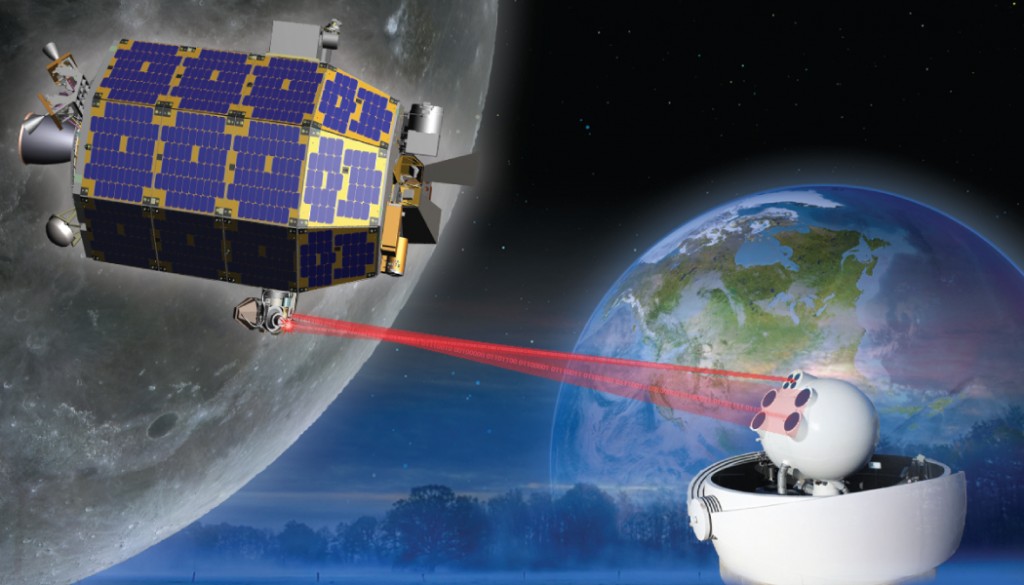You may have read in the ESA website in July (see Laser communications set for Moon mission) that the Agency is working with NASA on optical communications in space. Later this year, ESA’s Optical Ground Station in Tenerife, Spain, will join two NASA stations to communicate with the LADEE Moon mission to demonstrate the “readiness of optical communication for future missions to Mars or anywhere else in the Solar System.” How cool is that? 🙂
There was a nice report last week in the NASA website giving a few more details on the activity; extract and link are below.
LADEE launch is set for tomorrow, 6 September, at 11:27 PM EDT (Saturday, 7 September, 05:27 CEST) from NASA Wallops. For updates, follow @NASALadee via Twitter.
Space Laser To Prove Increased Broadband Possible
LLCD’s main mission objective is to transmit hundreds of millions of bits of data per second from the moon to Earth. This is equivalent to transmitting more than 100 HD television channels simultaneously. LLCD receiving capability will also be tested as tens of millions of bits per second are sent from Earth to the spacecraft. These demonstrations will prove the technology for increased bandwidth for future missions is possible.
There is a primary ground terminal at NASA’s White Sands Complex in New Mexico, to receive and transmit LLCD signals. The team at MIT designed, built, and tested the terminal. They also will be responsible for LLCD’s operation at that site.
There are two alternate sites, one located at NASA’s Jet Propulsion Laboratory in California, which is for receiving only. The other is being provided by the European Space Agency on the Spanish island of Tenerife, off the coast of Africa. It will have two-way communication capability with LLCD. “Having several sites gives us alternatives which greatly reduces the possibility of interference from clouds,” said Cornwell.


Discussion: no comments